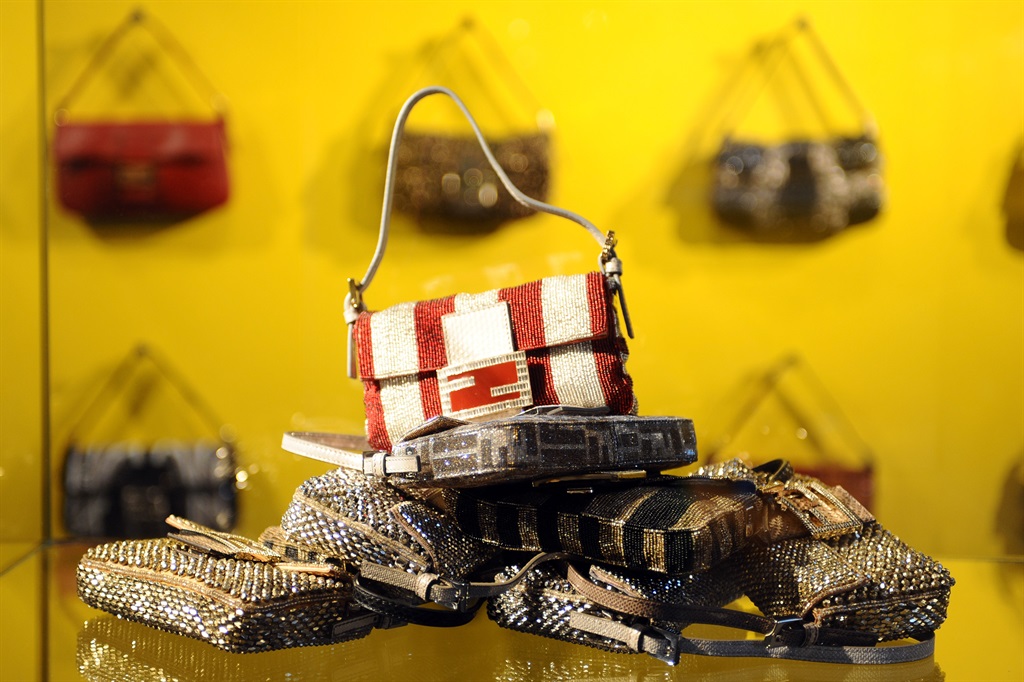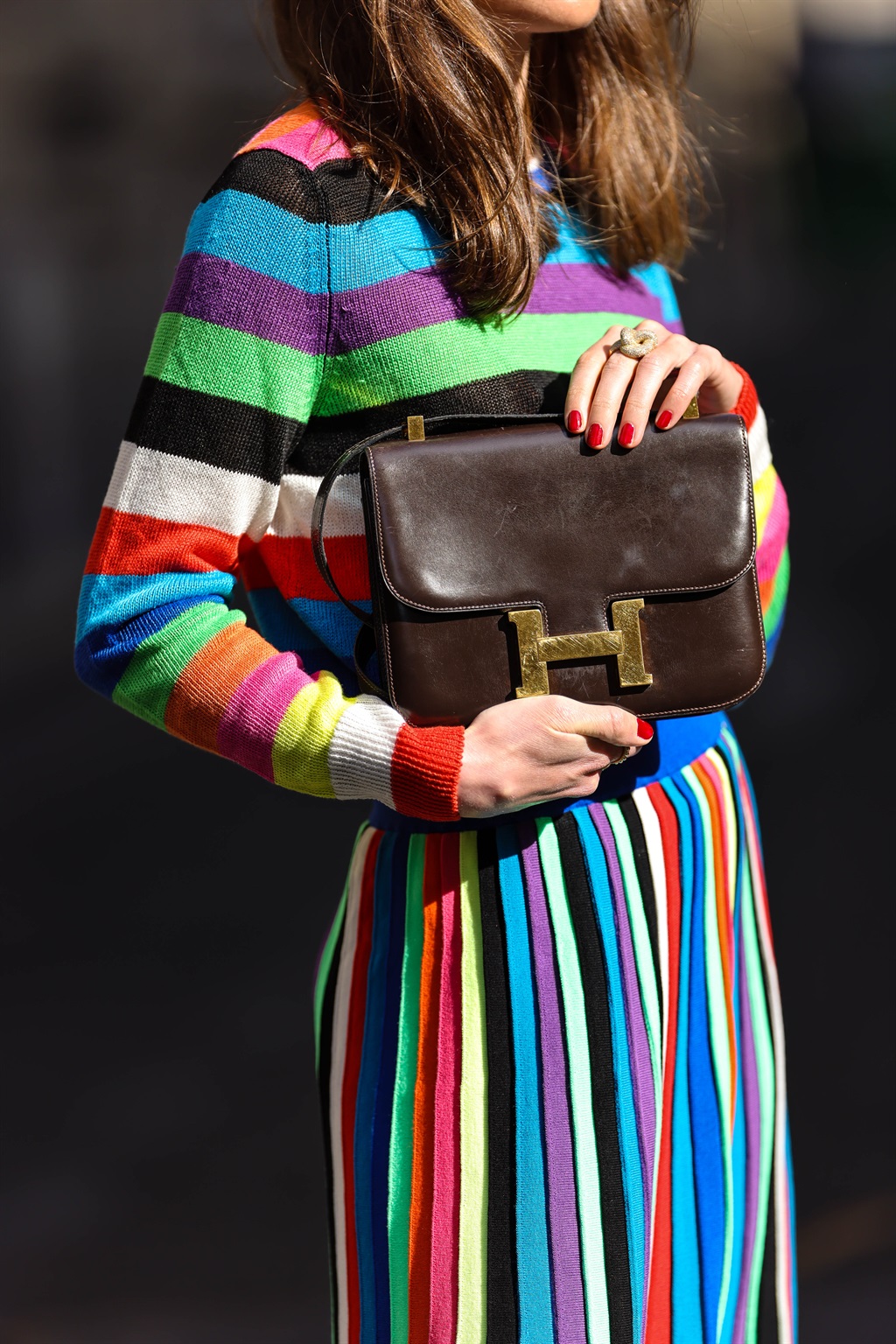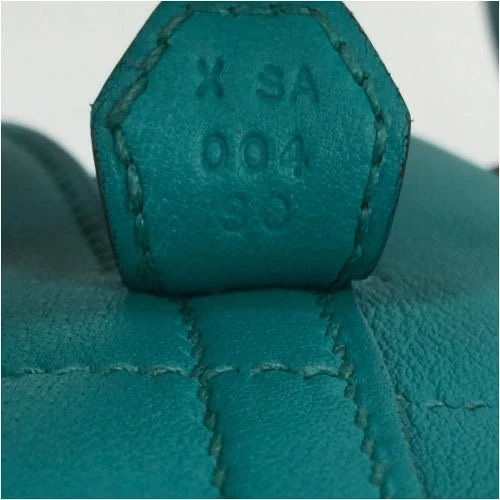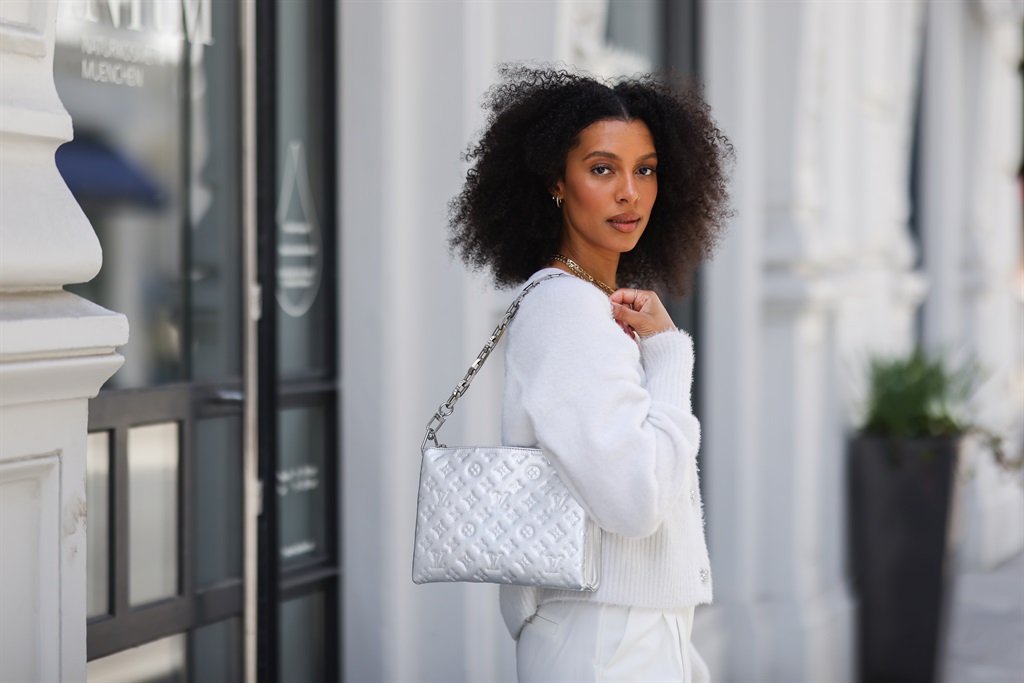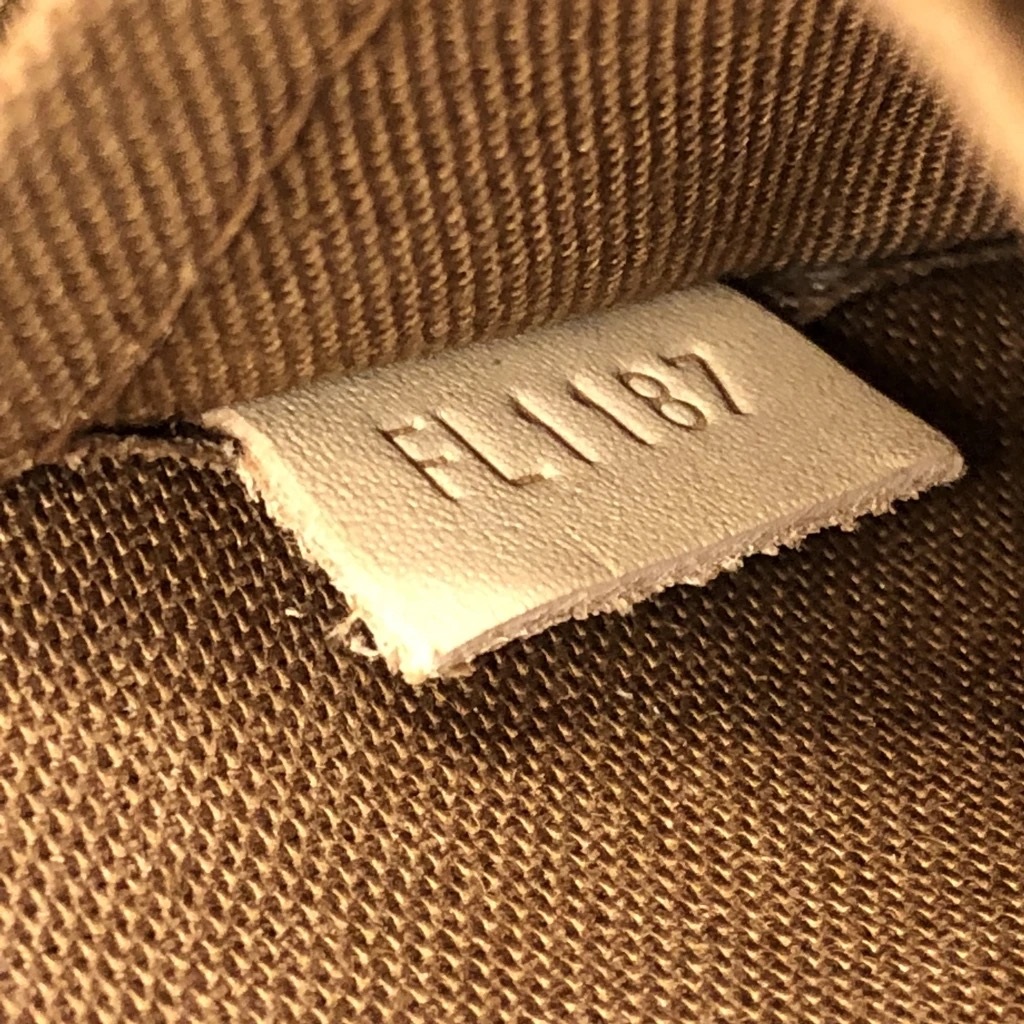
- The Global Brand Counterfeiting Report 2018 revealed that the volume of international trade in counterfeit goods reached $1.2 trillion in 2017 and was expected to reach $1.82 trillion by 2020.
- This report also states that the most counterfeited luxury brands are Chanel, Louis Vuitton, Prada, Fendi, Gucci and Dior, as they are "mostly very cheap to produce and infringe on well-known brands."
- While some individuals knowingly purchase counterfeit luxury goods, many more have been swindled into owning fakes. Here's how to determine if the handbag you're considering staking a claim on is authentic or not.
There's an episode of Sex and the City (season 3) where Carrie and Samantha discover the luxury black market in L.A. - a completely new world for these New Yorkers who usually bought Manolos on a whim on any given unremarkable Tuesday afternoon.
In this episode, Samantha purchases a fake Fendi Baguette - the fakeness of which is only given away by the lining inside - from a shady man selling his wares on the streets of L.A. for only $150 (about R2000); a fraction of the real McCoy's value.
A general view of atmosphere at FENDI Baguettemania, celebrating 15 Years of the Baguette at Maxfield, LA on September 5, 2012 in Los Angeles, California. (Photo by Stefanie Keenan/WireImage)
Of course, this piques Carrie's interest, so she and Samantha go on a mission to a seedy apartment in 'the Valley' to buy more handbags out of the fully stocked boot of the man's car, but never end up actually completing the purchase.
Carrie gets turned off by the fake purses she says "all looked so sad staring up at [me] from the trunk of the car." She then expresses that she'd rather wait to afford the real thing because "overpaying for a designer label would somehow make the experience more special."
READ MORE: You've seen Bling Empire, now here's the real deal about how the uber-rich shop for their diamonds
And that's a sentiment most people hold when it comes to opting out of buying faux designer threads and trinkets.
However, fake goods don't always "look up at you sadly" from the boot of a car owned by a man with a dubious aura. And faux purchasing isn't always a clandestine operation done in dingy alleyways.
Most times, they're as convincing as Charlotte's marriage, who blurts out "My marriage is a fake Fendi!" during this same episode; pristinely packaged and enviable on the outside, but lacking an authentic sense of charm to it on the inside.
While the telltale signs of counterfeit luxury items aren't always only hidden in the interiors or in inconspicuous areas of craftmanship, they can still be blind spots to an untrained eye, making them very easy to miss.
Of course, there are more obvious tells that are widely recognised by the average luxury consumer, but as this 2018 Fashionista article notes; "... there's been an explosion of what some are calling 'super fakes', 'Triple-A fakes' or 'line-for-lines' over the past five or so years."
In this article, Rebag CEO and Founder Charles Gorra, explains that fakes are being produced at a faster rate, saying; "counterfeiters are sometimes even producing in-season knockoffs, perhaps proving the old pro-'see-now, buy-now' argument that showing items six months in advance helps counterfeiters. And not only are knockoff bags getting better, but so are categories like jewelry, streetwear and sneakers."
The Global Brand Counterfeiting Report 2018 revealed that the volume of international trade in counterfeit goods reached $1.2 trillion in 2017 and was expected to reach $1.82 trillion by 2020. This report also states that the most counterfeited luxury brands are Chanel, Louis Vuitton, Prada, Fendi, Gucci and Dior, as they are "mostly very cheap to produce and infringe on well-known brands."
Cheap, fast production practices means that quality and safety standards are often not met. And while fake designer items do not hurt the affected brands directly, they may hurt consumers. According to World Trademark Review, the fact that the production of fakes does not abide by safety standards, gives them the potential to put the owners of counterfeit goods at risk.
"The risks of using counterfeit sunglasses are high, as they may not provide adequate protection to their wearer. The same goes for perfumes or clothes which have direct contact with the skin and may contain dangerous substances," the report highlights.
This report also adds that "the lack of traceability and the long reach of the internet pose additional risk for luxury brands which may appear liable if the public believe that it is the brands that are selling faulty products."
And at a time when online sales are at all-time high, it's now even easier to get duped into buying not only "what I ordered vs what I got" memorabilia, but faux luxury too.
READ MORE: Luxury goods | why elite brands are weathering the pandemic better than high street retailers
Seeing red flags
IACC President Bob Barchiesi told Fashionista; "Folks will be shopping on marketplaces and think they’re buying a secondhand, expensive handbag and it's a fake."
"There’s so many different distribution channels now online that are readily available for consumers, one; if they're looking to buy fakes, and, two; if they think they're getting a bargain and instead they're getting a fake.
"There are also standalone websites designed to look like authentic retailers to deceive shoppers that even use photos of authentic products," he adds.
Another expert consulted by Fashionista is RealReal Chief Authenticator Graham Wetzbarger, who says that "shoppers should not trust claims that bags were 'made in the same factory' as the real thing."
"You will hear stories that this bag came from the same town where Hermès makes Birkins and is exact same leather, just a different workshop. They'll tell you the best bags are made in Turkey and that this bag was made at night after the factory closed for the day and was sold out the back door. These better-quality fakes are often wholesaled as 'overruns' from 'authorised retailers' who of course do not exist. In reality, these are all lies," the authenticator explains.
A 2014 Jing Daily article also adds to these refuted claims, explaining that when it comes to luxury labels, yuandan goods don't actually exist. Yuandan goods are marked-down items with minor factory faults - much like what you would find at the Woodmead Value Mart or Access Park - rejected by various retail outlets. Some high-end brands do this, but never luxury labels.
Jing Daily reiterates the widely known fact that the luxury goods industry is “very strict".
"Even one blemish means [an item] can be confiscated by the manager and destroyed. Subcontractors wouldn’t want to risk the cooperation opportunity for the small benefit of selling yuandan goods," the article explains.
READ MORE: Chanel to Tom Ford - The rise of online stores that sell luxury aesthetic for social media branding
Take the 'b' out of bogus, and focus
Alright, so maybe you unknowingly bought a fake item already. But how can you ensure that it doesn't happen again?
In addition to the above-listed red flags, Rebag highlights seven areas of inspection which inform their vetting process for listing luxury handbags on their site.
This can also help you, the shopper, determine if a handbag is authentic or fake:
Quality of materials
Many brands use specific materials. Identify specific material(s) use and confirm accuracy of its characteristics.
Handles and straps
For handbags, examine the handles and straps to ensure they are of the appropriate materials, well-constructed, and properly affixed to the bag.
Stitching
Bags that are hand-stitched differ in appearance to bags that are machine-stitched. Don't get hung up on stitch count - it's a myth.
Hardware
All hardware elements on the bags should be verified to ensure they are of the appropriate weight, colour, and are cohesive throughout the bag.
Branding
Examine accuracy of style and placement. Branding should be consistent with the specific style and date of item in relation to the standards of the respective designer.
Interior features
The interior should be well-constructed, of the appropriate materials, and of equal quality to the exterior.
Overall craftsmanship
The item (or bag) should exhibit characteristics unique to its respective designer and is superior in quality and craftsmanship.
Zeroes in different area codes
Chanel handbags have serial codes, while Louis Vuitton has date codes, and Hermès has Blind Stamps - all of which aim to curb counterfeit sales.
Hermès
A brown leather Hermes bag seen on April 08, 2021 in Paris, France. (Photo by Edward Berthelot/Getty Images)
While Hermès' Blind Stamps serve the purpose of letting you know when your handbag was made, the absence of one might be a hint that your new friend is actually a faux.
A Blind Stamp - as explained by Rebag - is an embossed stamp that notates the year of manufacture and the craftsman (or craftsmen) who made the bag. The Date Stamp records the year of manufacture and is indicated by alphabetical character combined with a surrounding shape, or an alphabetical character alone. The Craftsman Stamp records the individual craftsman or group of craftsmen that manufactured the piece and is indicated by an individual or multiple stamps in a variety of shapes, symbols, letters, and numbers.
Allegedly, when a bag is sent to Paris for repairs, Hermès is able to identify the craftsmen who worked on the creation of the bag and those same craftsmen implement the repairs.
Image via Rebag
"As a general rule, Hermès will place this stamp in a hidden area of the bag, such as behind the plaques or in an interior pocket," the luxury retailer highlights.
"A handy tip for beginners to assess the age of their bags is to note that the D Square stamp is the year 2000 and to count through the alphabet until the correct year is reached."
Louis Vuitton
Bibata Kone wearing a silver Louis Vuitton Coussin bag. (Photo by Jeremy Moeller/Getty Images)
Inside each LV handbag is a combination of digits and letters. This is a date code indicating the factory your bag was made in and identifies the country where said factory is located.
The Louis Vuitton date code has been added to each bag since the early 1980s, but Rebag reassures that this is not to say that bags made before the '80s are not the real deal.
Louis Vuitton bags are manufactured in six countries; France, Italy, Spain, Germany, Switzerland, and the US, and they each offer a different country code that makes up part of the complete date code.
You can find the currently known LV country codes here.
In terms of date code placement; they are located in the interior of a bag, either by direct embossing, or they are printed or embossed on a leather tab sewn into a seam, explains Rebag.
Image via Rebag
The most common date code tag is a rectangular leather tag - usually the same leather as the trim of a given bag - that is sewn into the lining within a seam. It can either be embossed or foil heat stamped, depending on the model and factory.
READ MORE: How vintage Chanel bags are professionally restored and re-dyed
Chanel
Dayami Candebat carrying a black vintage Chanel leather bag on April 24, 2021 in Hamburg, Germany. (Photo by Jeremy Moeller/Getty Images)
According to Rebag, there are a few things to note when it comes to Chanel serial codes:
Numbers initially had seven digits before the codes required the use of a ten to start, at which point they became eight-digit numbers. There is a zero series, this was the first round of codes added to Chanel bags for the first two years. Serial codes are often referred to as “series” based on the first one to two digits (depending on seven or eight-digit numbers).
Bags manufactured in 2020, will have a serial code beginning with 30, those made in 2019 have codes beginning with 29, 28, 27, and 26. And so the sequence goes on.
Essentially, if you're buying a Chanel handbag today, be weary if the first two digits of the serial code are above 31 (give or take).
Additionally, the serial number printed on each bag is "specific to the bag itself."
"This allows the brand to keep a close eye on pieces sold across various platforms to prevent counterfeit pieces from circulating within the resale market."
Sources: Fashionista, Jing Daily, World Trademark Review, Rebag
Follow us on social media: Facebook, Twitter, Instagram
Sign up to W24's newsletters so you don't miss out on any of our stories and giveaways.




 Publications
Publications
 Partners
Partners





